CAT Practice Test: September 22 - CAT MCQ
30 Questions MCQ Test Daily Test for CAT Preparation - CAT Practice Test: September 22
Directions: Answer the questions based on the information that follows:
Vamsi gets his lunch from Hotel Annapurna, from Monday to Friday every week. He will get any one of these desserts daily - Kheer, Kalakand, Papidi or Halwa - along with his lunch. Also,
- He does not get the same dessert for more than two consecutive days.
- If he gets Papidi one day, he will get Kheer the next day.
- If he gets Kalakand one day, he will not get Halwa or Kheer the next day.
- If he gets Halwa one day, he will get either Kalakand or Papidi the next day.
- On Mondays, he gets either Kheer or Kalakand. If he gets Kheer one day, he will not get Kalakand or Papidi the next day.
If in a particular week, he gets Papidi on Friday, which dessert does he definitely not get on Tuesday of the same week?
Vamsi gets his lunch from Hotel Annapurna, from Monday to Friday every week. He will get any one of these desserts daily - Kheer, Kalakand, Papidi or Halwa - along with his lunch. Also,
Directions: Answer the questions based on the information that follows:
Vamsi gets his lunch from Hotel Annapurna, from Monday to Friday every week. He will get any one of these desserts daily - Kheer, Kalakand, Papidi or Halwa - along with his lunch. Also,
- He does not get the same dessert for more than two consecutive days.
- If he gets Papidi one day, he will get Kheer the next day.
- If he gets Kalakand one day, he will not get Halwa or Kheer the next day.
- If he gets Halwa one day, he will get either Kalakand or Papidi the next day.
- On Mondays, he gets either Kheer or Kalakand. If he gets Kheer one day, he will not get Kalakand or Papidi the next day.
In how many different ways, can he get a dessert from Monday to Friday?
Vamsi gets his lunch from Hotel Annapurna, from Monday to Friday every week. He will get any one of these desserts daily - Kheer, Kalakand, Papidi or Halwa - along with his lunch. Also,
Directions: Answer the questions based on the information that follows:
Vamsi gets his lunch from Hotel Annapurna, from Monday to Friday every week. He will get any one of these desserts daily - Kheer, Kalakand, Papidi or Halwa - along with his lunch. Also,
- He does not get the same dessert for more than two consecutive days.
- If he gets Papidi one day, he will get Kheer the next day.
- If he gets Kalakand one day, he will not get Halwa or Kheer the next day.
- If he gets Halwa one day, he will get either Kalakand or Papidi the next day.
- On Mondays, he gets either Kheer or Kalakand. If he gets Kheer one day, he will not get Kalakand or Papidi the next day.
If he gets Papidi on Tuesday, which sweet will he not get on Friday?
Vamsi gets his lunch from Hotel Annapurna, from Monday to Friday every week. He will get any one of these desserts daily - Kheer, Kalakand, Papidi or Halwa - along with his lunch. Also,
Directions: Answer the questions based on the information that follows:
Vamsi gets his lunch from Hotel Annapurna, from Monday to Friday every week. He will get any one of these desserts daily - Kheer, Kalakand, Papidi or Halwa - along with his lunch. Also,
- He does not get the same dessert for more than two consecutive days.
- If he gets Papidi one day, he will get Kheer the next day.
- If he gets Kalakand one day, he will not get Halwa or Kheer the next day.
- If he gets Halwa one day, he will get either Kalakand or Papidi the next day.
- On Mondays, he gets either Kheer or Kalakand. If he gets Kheer one day, he will not get Kalakand or Papidi the next day.
If he gets Papidi on Friday, which sweet should he not get on Wednesday in the same week?
Directions: Read the given information and answer the following question.
P, Q, R, S, T, U, V, W, X and Y are ten employees of different companies and each of them is working on a different project. There are three public companies (A, B and C) and seven private companies (E, F, G, H, I, J and K), though not in the same order. They are sitting in two rows with P, Q, R, S and T facing south and U, V, W, X and Y facing north, though not in the same order. There are 3 female and 7 male employees. No females are facing each other. No male is an employee of a public company. X, who works in company C, sits in the middle of the row. The persons working in company B and company A sit on the two sides of the person who is exactly opposite to X. V sits third to the right of the person who works in company F and is not facing the person working in company B. There are two persons sitting between U and Y. The person working in company B is facing U, who is working in company I. Q sits at the end of the row and S sits third to the right of Q, who is working in company H. P and Q are immediate neighbours of T. T is not facing the person working in company K. The persons working in companies G and Y are at diagonally opposite ends to each other. The person working in company E faces south.
What is the position of the person working in company C with respect to V?
Directions: Read the given information and answer the following question.
P, Q, R, S, T, U, V, W, X and Y are ten employees of different companies and each of them is working on a different project. There are three public companies (A, B and C) and seven private companies (E, F, G, H, I, J and K), though not in the same order. They are sitting in two rows with P, Q, R, S and T facing south and U, V, W, X and Y facing north, though not in the same order. There are 3 female and 7 male employees. No females are facing each other. No male is an employee of a public company. X, who works in company C, sits in the middle of the row. The persons working in company B and company A sit on the two sides of the person who is exactly opposite to X. V sits third to the right of the person who works in company F and is not facing the person working in company B. There are two persons sitting between U and Y. The person working in company B is facing U, who is working in company I. Q sits at the end of the row and S sits third to the right of Q, who is working in company H. P and Q are immediate neighbours of T. T is not facing the person working in company K. The persons working in companies G and Y are at diagonally opposite ends to each other. The person working in company E faces south.
Who is facing the person working in company A?
Directions: Read the given information and answer the following question.
P, Q, R, S, T, U, V, W, X and Y are ten employees of different companies and each of them is working on a different project. There are three public companies (A, B and C) and seven private companies (E, F, G, H, I, J and K), though not in the same order. They are sitting in two rows with P, Q, R, S and T facing south and U, V, W, X and Y facing north, though not in the same order. There are 3 female and 7 male employees. No females are facing each other. No male is an employee of a public company. X, who works in company C, sits in the middle of the row. The persons working in company B and company A sit on the two sides of the person who is exactly opposite to X. V sits third to the right of the person who works in company F and is not facing the person working in company B. There are two persons sitting between U and Y. The person working in company B is facing U, who is working in company I. Q sits at the end of the row and S sits third to the right of Q, who is working in company H. P and Q are immediate neighbours of T. T is not facing the person working in company K. The persons working in companies G and Y are at diagonally opposite ends to each other. The person working in company E faces south.
Q is related to X and T is related to U in the same way as P is related to
Directions: Read the given information and answer the following question.
P, Q, R, S, T, U, V, W, X and Y are ten employees of different companies and each of them is working on a different project. There are three public companies (A, B and C) and seven private companies (E, F, G, H, I, J and K), though not in the same order. They are sitting in two rows with P, Q, R, S and T facing south and U, V, W, X and Y facing north, though not in the same order. There are 3 female and 7 male employees. No females are facing each other. No male is an employee of a public company. X, who works in company C, sits in the middle of the row. The persons working in company B and company A sit on the two sides of the person who is exactly opposite to X. V sits third to the right of the person who works in company F and is not facing the person working in company B. There are two persons sitting between U and Y. The person working in company B is facing U, who is working in company I. Q sits at the end of the row and S sits third to the right of Q, who is working in company H. P and Q are immediate neighbours of T. T is not facing the person working in company K. The persons working in companies G and Y are at diagonally opposite ends to each other. The person working in company E faces south.
Which of the following groups represents female employees?
Directions: Study the information given below and answer the question that follows.
There are some people living in a building: Pallavi, Mayank, Karan, Ravya, Jasmine, Sheetal, Tinu, Om, Uma, Vikram, Ram, and Seema. They visited 12 different places, namely, Agra, Kerala, Darjeeling, Shimla, Kasauli, Goa, Kanpur, Udaipur, Palampur, Panipat, Dalhousie and Mussoorie (but not necessarily in the same order) on 12 different dates of 12 different months in a year starting from January. The dates of the month on which they visited were 1, 2, 3, 4, 5, 6, 9, 10, 11, 13, 17 and 19.
Jasmine and Tinu went to Agra and Kerala, respectively. Three of the persons visited Darjeeling, Dalhousie and Shimla in consecutive months in the same order. Tinu, Sheetal, Jasmine and Om visited on two-digit prime-numbered day of different months. Jasmine went on the second lowest two-digit prime-numbered day and in a month which has less than 30 days. Tinu went on the lowest two-digit prime-numbered day and in a month which has more than 30 days. Tinu went immediately after the month in which Sheetal went. Seema went on the very first day of a month. Sheetal went on the highest two-digit prime-numbered day and in the second last month of the year. Pallavi went in the month immediately after Om's trip. Vikram went in the month immediately after Seema's trip. Karan went to Goa in the third last month and on an even prime-numbered day. Only five people scheduled their trip after Om. There was one person who scheduled his trip to Kasauli on fifth day of a month. The very first person who went to the trip was Mayank. Only two persons scheduled their trip before the one who went to Darjeeling. The one who went to Palampur went before the one who went to Darjeeling. Only one person scheduled his trip after the one who went to Mussoorie. The person who went on sixth day of a month went immediately after the one who went to Shimla and immediately before the one who went to Kanpur. There were five people who scheduled their trip between the one who went on third day of a month and the one who went on fourth day of a month. Ravya, who went in April, went on a day square of the day on which Uma scheduled her trip. Mayank chose the first two-digit number as the date for his trip. The one who visited Udaipur went on an even-numbered day of a month. Ram went to Panipat.
Which of the following combinations of "Month : Date : Name : Place" is correct?
Directions: Study the information given below and answer the question that follows.
There are some people living in a building: Pallavi, Mayank, Karan, Ravya, Jasmine, Sheetal, Tinu, Om, Uma, Vikram, Ram, and Seema. They visited 12 different places, namely, Agra, Kerala, Darjeeling, Shimla, Kasauli, Goa, Kanpur, Udaipur, Palampur, Panipat, Dalhousie and Mussoorie (but not necessarily in the same order) on 12 different dates of 12 different months in a year starting from January. The dates of the month on which they visited were 1, 2, 3, 4, 5, 6, 9, 10, 11, 13, 17 and 19.
Jasmine and Tinu went to Agra and Kerala, respectively. Three of the persons visited Darjeeling, Dalhousie and Shimla in consecutive months in the same order. Tinu, Sheetal, Jasmine and Om visited on two-digit prime-numbered day of different months. Jasmine went on the second lowest two-digit prime-numbered day and in a month which has less than 30 days. Tinu went on the lowest two-digit prime-numbered day and in a month which has more than 30 days. Tinu went immediately after the month in which Sheetal went. Seema went on the very first day of a month. Sheetal went on the highest two-digit prime-numbered day and in the second last month of the year. Pallavi went in the month immediately after Om's trip. Vikram went in the month immediately after Seema's trip. Karan went to Goa in the third last month and on an even prime-numbered day. Only five people scheduled their trip after Om. There was one person who scheduled his trip to Kasauli on fifth day of a month. The very first person who went to the trip was Mayank. Only two persons scheduled their trip before the one who went to Darjeeling. The one who went to Palampur went before the one who went to Darjeeling. Only one person scheduled his trip after the one who went to Mussoorie. The person who went on sixth day of a month went immediately after the one who went to Shimla and immediately before the one who went to Kanpur. There were five people who scheduled their trip between the one who went on third day of a month and the one who went on fourth day of a month. Ravya, who went in April, went on a day square of the day on which Uma scheduled her trip. Mayank chose the first two-digit number as the date for his trip. The one who visited Udaipur went on an even-numbered day of a month. Ram went to Panipat.
Who among the following went in three consecutive months in same order?
Who among the following is engaged in Doctor’s Profession with her husband?
Which of the following pair is the correct match of husband –wife?
What is the position of Nisha with respect to the person whose birthday is in the month of July?
Which of the following combinations is definitely true?
How many persons are sitting between Priti and the person whose birthday is in the month of April? (If counted from Priti in clockwise direction)
Which of the following persons birthday is in the month of February?
The total money that Vijay (V) and Manju (M) have is less than Rs. 5 but both are having some money. Which of the following is not necessarily true?
How many ordered pairs of natural numbers satisfy the inequality 8x + 2y ≤ 24?
If b > a and c < 0, then which of the following is true (a, b > 0)?
If -1 ≤ v ≤ 1, -2 ≤ u ≤ -0.5, -2 ≤ z ≤ -0.5 and w = vz/u, then which of the following is necessarily true?
If - 2 ≤ a ≤ - 1, - 4 ≤ b ≤ - 2, 2 ≤ c ≤ 4 and 1 ≤ d ≤ 3, what is the maximum value of ab2/cd2 ?
For the given consecutive integers p, q, r and s, such that, p, q, r, s > 0, then, which of the following can be true?
Which of the following is the possible value of a in the given inequality |2a + 3| > |7a - 2|?
To determine their favourite brand of chocolates in a particular community, a big chain of retail stores conducted a survey for elementary school kids. In the survey, a kid was presented with a tray of 8 chocolates of different brands and asked to pick one. In all, 400 kids were involved in the survey. Out of the first 100, 20 chose brand C. In the next 200, 40 chose brand C. k kids in the last 100 opted for brand C. If not more than 25% of kids chose brand C, then which of the following inequalities best describes the value for k?
For the given pair (x, y) of positive integers, 7x + 3y = 123. How many integral pairs of x and y satisfy the given condition?
x and y are real numbers satisfying the conditions 2 < x < 3 and - 8 < y < - 7. Which of the following expressions will have the least value?
|
152 docs|327 tests
|


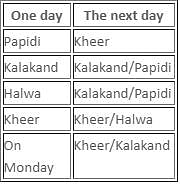
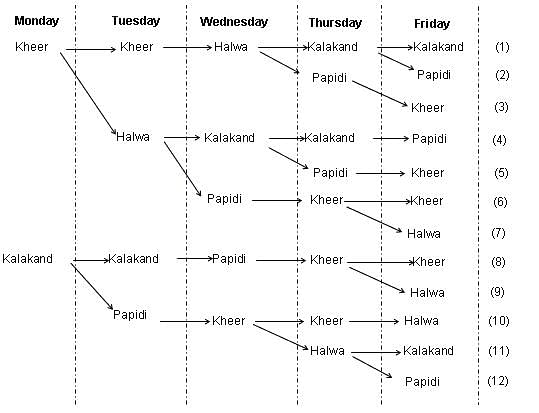

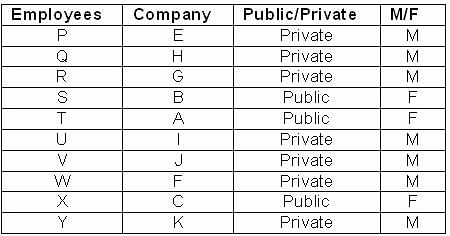

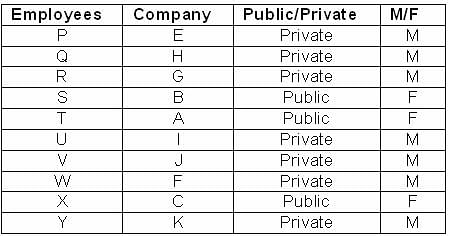

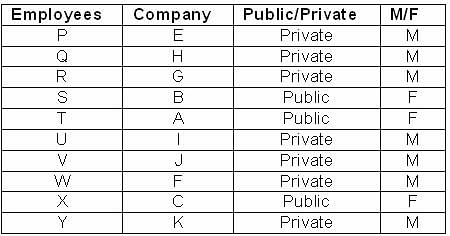

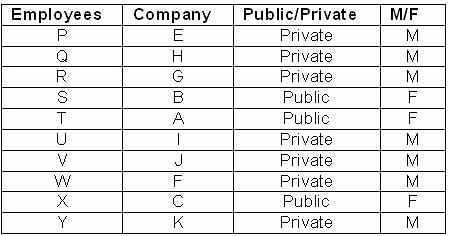

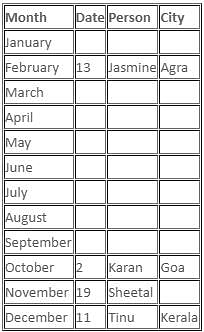
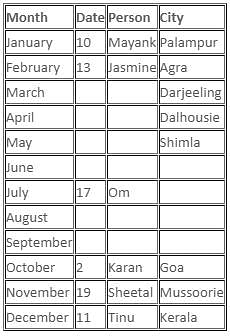
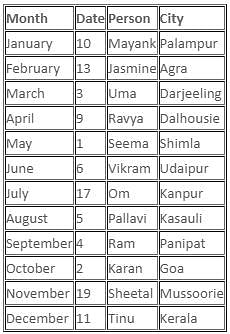
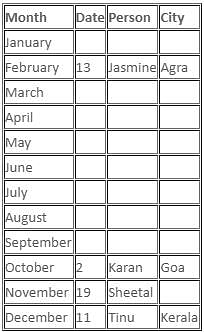

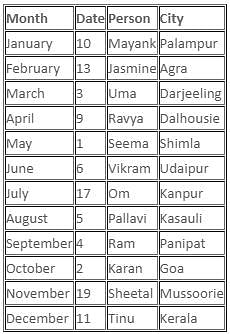
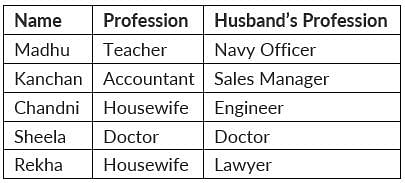
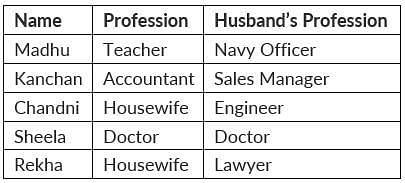
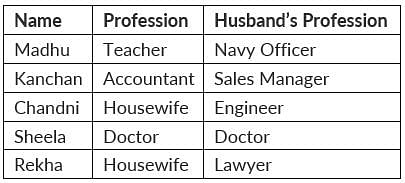
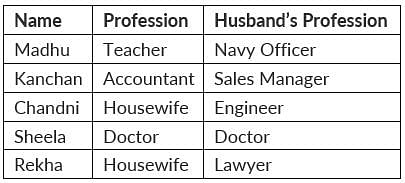
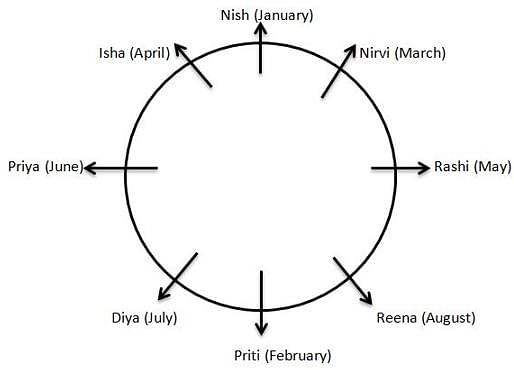
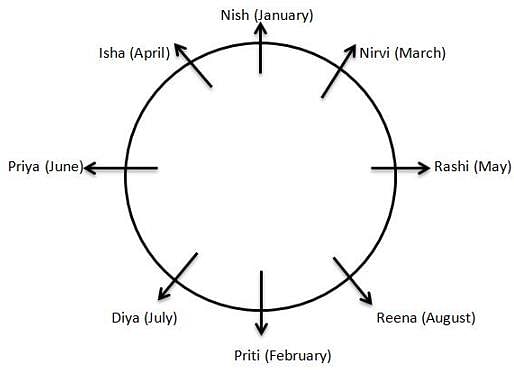
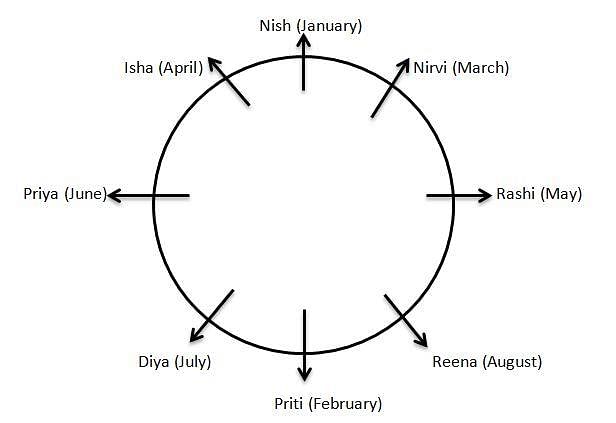
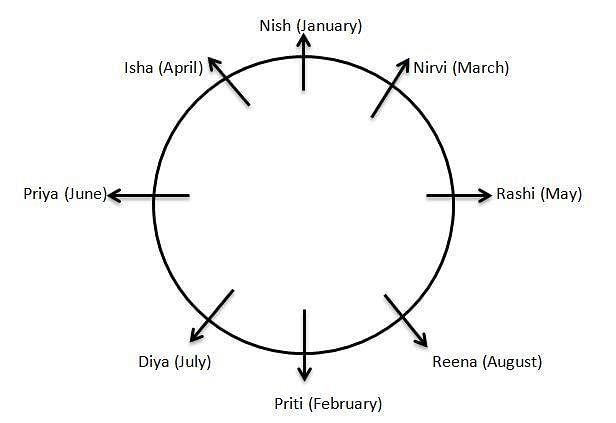
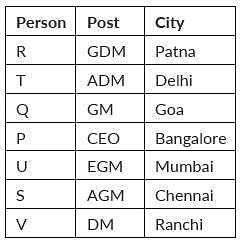
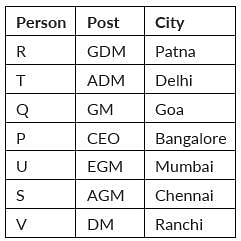


 which is true.
which is true.



 then inequality becomes,
then inequality becomes,



 then inequality becomes,
then inequality becomes,
 is the correct interval of a.
is the correct interval of a.














